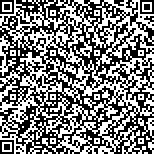| 引用本文: |
-
覃仙玲,陈宪云,刘明珠,余庆,牙韩争,朱冬琳,王一兵,陈波,李鹏飞.基于18S rDNA序列鉴定北部湾养殖区引发藻华的一株原甲藻[J].广西科学院学报,2019,35(3):225-231. [点击复制]
- QIN Xianling,CHEN Xianyun,LIU Mingzhu,YU Qing,YA Hanzheng,ZHU Donglin,WANG Yibing,CHEN Bo,LI Pengfei.Identification of a Prorocentrum Species from an Aquaculture Area in Beibu Gulf of Guangxi during a Harmful Algal Bloom: Base on 18S rDNA Sequence[J].Journal of Guangxi Academy of Sciences,2019,35(3):225-231. [点击复制]
|
|
| |
|
|
| 本文已被:浏览 620次 下载 613次 |

码上扫一扫! |
| 基于18S rDNA序列鉴定北部湾养殖区引发藻华的一株原甲藻 |
|
覃仙玲1, 陈宪云1, 刘明珠2, 余庆1, 牙韩争1, 朱冬琳1, 王一兵3, 陈波1, 李鹏飞1,2
|
|
|
| (1.广西科学院, 广西近海海洋环境科学重点实验室, 广西南宁 530007;2.广西壮族自治区海洋研究所, 广西海洋生物技术重点实验室, 广西北海 536000;3.广西民族大学海洋与生物技术学院, 广西南宁 530006) |
|
| 摘要: |
| 高度保守的核糖体18S rDNA序列可用于经济快捷且精确地鉴定浮游植物的种类。2018年夏季,广西北部湾近海的对虾养殖区内发生了原甲藻引起的藻华,藻华的优势种密度为5.5×105 cells·L-1,本文采用形态学观察法结合序列分析鉴定的方法来鉴定该藻的种类。结果表明,在形态上,这株分离培养获得的原甲藻(编号BBGA-9003),其大部分细胞类似心形或卵形,少部分细胞近似三角形,鞭毛2条,细胞长和宽分别为(16.55±1.42)μm和(13.84±1.86)μm。该原甲藻经18S rDNA基因序列测定并进行BLAST分析,结果表明该原甲藻序列和GenBank中56株不同种原甲藻具有很高的同源性,在系统进化树上与不同来源的微小原甲藻聚在一大分支上,且与各微小原甲藻间的遗传距离均小于与其他种间的遗传距离。因此,从分子生物学的角度鉴定该株原甲藻属于微小原甲藻,此种藻华的发生意味着北部湾养殖区有害藻华种类多样性的增加。本研究为18S rDNA序列测定用于海洋浮游植物种类鉴定提供了实验依据,也为广西北部湾养殖区有害藻华的防治提供基础资料。 |
| 关键词: 北部湾 养殖区 微小原甲藻 18S rDNA 分子鉴定 |
| DOI:10.13657/j.cnki.gxkxyxb.20190903.006 |
|
| 基金项目:广西重点研发计划项目(2018AB52003,AB16380282),广西自然科学基金项目(2018GXNSFBA281011),广西科技人才专项(2018AD19367)和广西科学院基本科研业务费项目(2018YJJ903,2018YJJ902)资助。 |
|
| Identification of a Prorocentrum Species from an Aquaculture Area in Beibu Gulf of Guangxi during a Harmful Algal Bloom: Base on 18S rDNA Sequence |
|
QIN Xianling1, CHEN Xianyun1, LIU Mingzhu2, YU Qing1, YA Hanzheng1, ZHU Donglin1, WANG Yibing3, CHEN Bo1, LI Pengfei1,2
|
| (1.Guangxi Key Laboratory of Marine Environmental Science, Guangxi Academy of Sciences, Nanning, Guangxi, 530007, China;2.Guangxi Key Laboratory for Marine Biotechnology, Guangxi Institute of Oceanography, Beihai, Guangxi, 536000, China;3.School of Marine Sciences and Biotechnology, Guangxi University for Nationalities, Nanning, Guangxi, 530006, China) |
| Abstract: |
| The highly conserved ribosomal 18S rDNA sequence can be used to identify phytoplankton species quickly,economically and accurately.In the summer of 2018,the algal bloom caused by Prorocentrum (Pyrrophyta) happened in a prawn cultivation area in the Beibu Gulf of Guangxi,and the dominant species density of algal bloom was 5.5×105 cells·L-1.To identify the species of this alga,morphological observation and sequence analysis and identification method were used.The ribosome 18S rDNA sequences of this Prorocentrum were cloned and then sequenced for further identification.The results showed that,in the morphological aspect,most of Prorocentrum (No.BBGA-9003) cells obtained by the isolation and culture resembled a heart shape or an ovate shape,and a small number of cells were approximately triangular,with two flagella,and the cell length and width were respectively (16.55±1.42) μm and (13.84±1.86) μm.This Prorocentrum was sequenced by 18S rDNA gene and analyzed by BLAST,the result showed the Prorocentrum series had high homology with 56 strains of different Prorocentrum species in GenBank,and clustered on a large branch of the phylogenetic tree with different sources of P.minimum.The genetic distance from each Prorocentrum minimum was smaller than the genetic distance between other species.Therefore,from the perspective of molecular biology,the species belonged to P.minimum,and the occurrence of such algal blooms meant an increase in the diversity of harmful algal blooms in the Beibu Gulf aquaculture area.This study provides an experimental basis for the identification of marine phytoplankton species by 18S rDNA sequencing,and also provides basic data for the prevention and control of harmful algal blooms in aquaculture areas in Beibu Gulf. |
| Key words: Beibu Gulf aquaculture area Prorocentrum minimum 18S rDNA molecular identification |
|
|
|
|
|